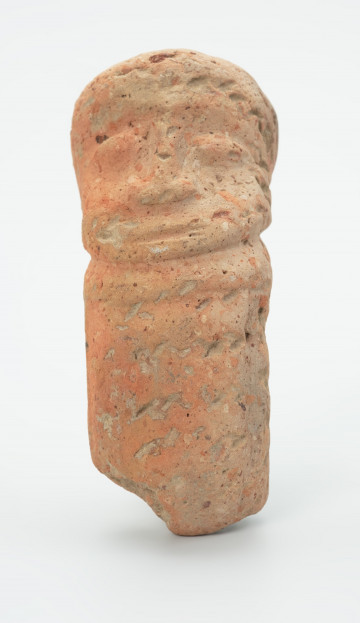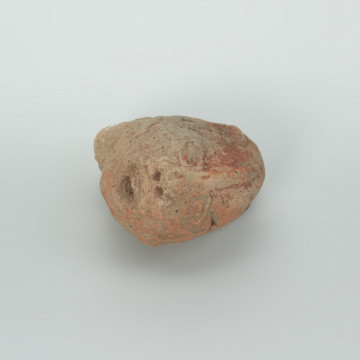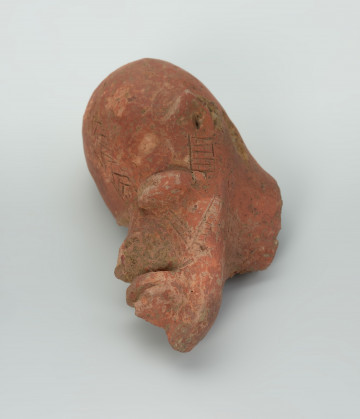
Figure
około 1480
National Museum in Szczecin
Part of the collection: Terracotta from the Niger
Djenne-Jeno (also called old Djenne or Djenne, Djenne-Djenno, Jenne-Jeno, or old Jeno) is considered one of the oldest early urban centres of sub-Saharan Africa. The ancient city is located in modern Mali, 130 kilometres south-west of the metropolis of Mopti and 3 kilometres from the medieval city of Djenne. It was founded by newcomers from the Sahara in the 3rd century BC. It existed until the 14th century.During the archaeological research in Djenne-Jeno, many great ceramic works were discovered. The whole region became famous for discovering a considerable number of beautiful and well-made small vessels, jugs and bottles of various shapes, and larger vessels, including those for storing water, grain, for medical purposes and those used as urns for the ashes of the dead. However, one of the most interesting archaeological finds from Djenne-Jeno are terracotta sculptures, which mainly depict human figures. The purpose of their creation is still unclear, dating is also a problem. Indeed, it can be said that they were carefully made, and the artists tried to reproduce even the most minor details of the figures. In this case, there are convex, round nodules imitating traces of a disease.
Katarzyna Findlik-Gawron
Author / creator
Dimensions
cały obiekt: height: 6,8 cm, width: 3,6 cm
Object type
sculpture
Creation time / dating
Creation / finding place
Identification number
Location / status

około 1480
National Museum in Szczecin

około 1201 — 1985
National Museum in Szczecin

około 1201 — 1985
National Museum in Szczecin
DISCOVER this TOPIC
Castle Museum in Łańcut
DISCOVER this PATH
Educational path